Introducing a clear or semi-clear element to your statue can add depth, motion and textural diversity. Clear casting resin in available from a number of manufacturers. The most common is water-clear or semi-clear urethane. Both need a little extra care to produce a successful casting. Water-clear is the most temperamental.
Water-Clear: RTV Silicone molds contain alcohol which can impede a full cure of water-clear. A few hours in the oven on low can bake out the alcohol from the mold, reducing the curing issue. There’s also the issue of mass. All thermal cure casting resins rely on mass to generate heat to turn to the part liquid into a solid. Casting small parts in water-clear can be frustrating as the first few casts can come out slightly gummy or with an uneven surface. A simple solution is to cast the water-clear into a warm mold. Starting with ten seconds increments, warm the mold in the microwave until its very warm to the touch. Test its warmth against your cheek for a truer temperature read. The use of a mold release will also help toward a successful casting. Like all urethane casting resins, it can be tinted to a endless variety of colors and densities.
Semi-Clear: The downside to this work horse resin is that it’s A side is amber, which results in a slightly yellow leaning casting. In small parts, it almost unnoticeable. But in larger parts, that yellow tint deepens. Some of the yellow can be lessened by adding a little lavender or very light purple tint. But it will never be as “white clear” as water-clear resin. But, if you’re looking for a easy to use, reliable clear-effect resin and plan to tint it, then Semi-Clear is for you. The same thing applies when casting small parts, using a warm mold will set things up more quickly. This resin has a tendency to set up more quickly than regular casting resin so, overnight in the fridge will give you more pot time and result in cleaner castings when casting large pieces.
Anne Phibian: Using a green semi-clear for the base helps lessen the weight of the base and adds a more substantial feel to the figure. The fin collar was cast in a yellow-tinted semi-clear and joined to a standard urethane casting. To heighten the transparency of the resin, I used a high gloss clear varnish on both the collar and the base.
Mr. B’s Bookkeeper: He comes with three sets of eyes and three mouth sets which results in a possible 82 expression combinations. I cast each eye unit in red tinted semi-clear and painted the back of each eye with bright chrome making reflecting mini-mirrors. As the light shifts, the eyes react.
Water Nymph: Her dress is made up of nine castings of lightly tinted semi-clear. I tried water-clear initially but it didn’t seem to work as well. Each piece was sprayed with high gloss varnish before being glued in place.
DC Dynamics/Aquaman: The first of the eight Dynamics statues. One of the advantages to using a clear resin for water or smoke effects is the way the light plays through the denser and thinner sections. All but one of the eight has a sculpted inner core that moves in the opposite direction than does the exterior motion direction. As you move around the piece those opposing motion lines create movement you couldn’t get with any other material.
DC Dynmaics/Sinestro: Semi-clear resin allowed me to create a two part energy ball through which his fist could be seen. A coat of high gloss on both the inside and outside of the ball heightens the effect.
Polyphemus: The specter cloud was cast in a slightly green tinted yellow resin. Several coats of flat or lusterless varnish added to the smoke effect.
Prometheus: The base was cast in a green tinted semi-clear, with an air brushed opacity where the figure plugs in and sprayed with lusterless varnish. The flame, high gloss varnished yellow tint. His body was cast in bright red semi-clear. On the top of his crown is an unpainted varnished window. The light enters through the window, bounces around the opaque painted head and lights up the eyes and crown jewel. Stole this idea from Byzantine Churches.
Nosferatu: Casting the base in red tinted resin lightens the structure while giving it a kind of stained glass/blood effect.
Athena: She’s the star of Pop Sculpture. We needed to use as many design and casting techniques as we could cram into one statue. Her base is tinted semi-clear with several coats of lusterless varnish. The flame is a tinted resin cap that fits over the head of her spear, high glossed. Her shield uses a high glossed water-clear cast lens over a printed graphic.
Retro Joker: As with Anne Phibian, using a clear cast base reduces the weight of the base lifting the portrait in a kind of floating attitude.
He Who Laughs Last: I wanted to try and approximate the look of hand-blown glass for the sides of his box with prints of Durer underneath. I made an open face mold, cast the semi-clear and laid a piece of crinkled aluminum foil on top. As the resin cured, it created gas pockets that worked as air bubbles for the hand blown look. I must have gone through a dozen castings for these four. The lid was a basic lens casting and his eye units had a clear cast bubble lens. Each eye unit can pivot.
Ghost of Christmas Present. He’s described in the book as having a crown of ice cycles and holding a flaming Horn of Plenty. The wreath of holly and the ice cycles was sculpted as one piece, cast in water-clear and the wreath opaque painted.
DC Dynamics/Joker: Another example of how light plays through denser and thinner parts of the base creating motion.
Major Marjorie: Clear cast tinted base lifts the piece without adding weight. Her helmet is removable and is cast in a faintly tinted blue high glossed semi-clear.
Martian Mangler: Clear cast base. His drool is acid lethal. I cast it in a very warm mold in a tinted semi-clear and high glossed with several thick coats of brushed on varnish.
If you’re inclined to give clear resin a try. Start with the semi-clear. Buy two kits; one you’ll keep in the fridge for those larges cast and the other at room temperature for the smaller casts. And you too will see clearly, or semi-clearly, too.


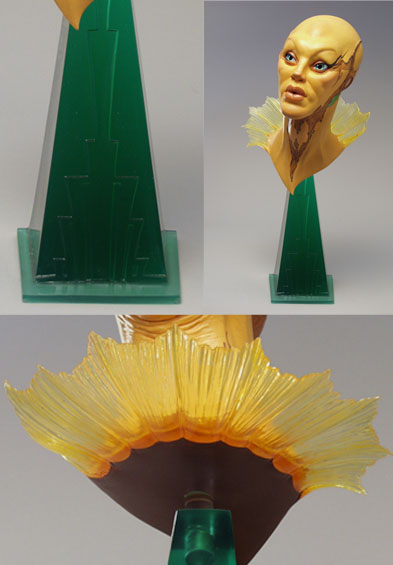
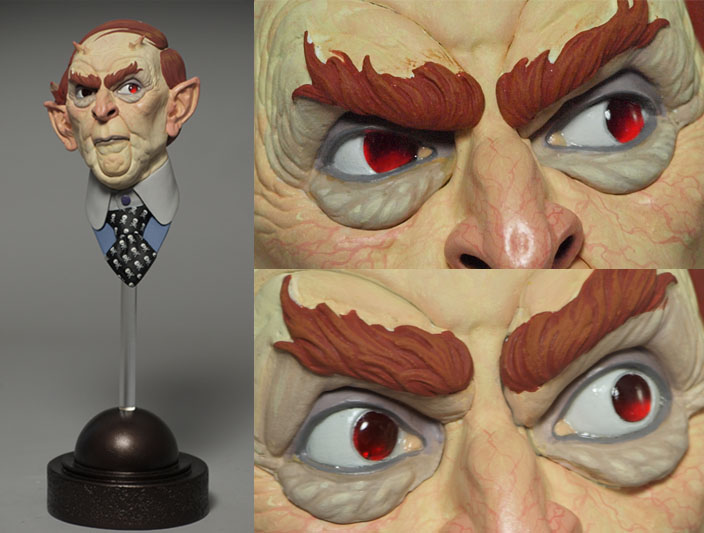
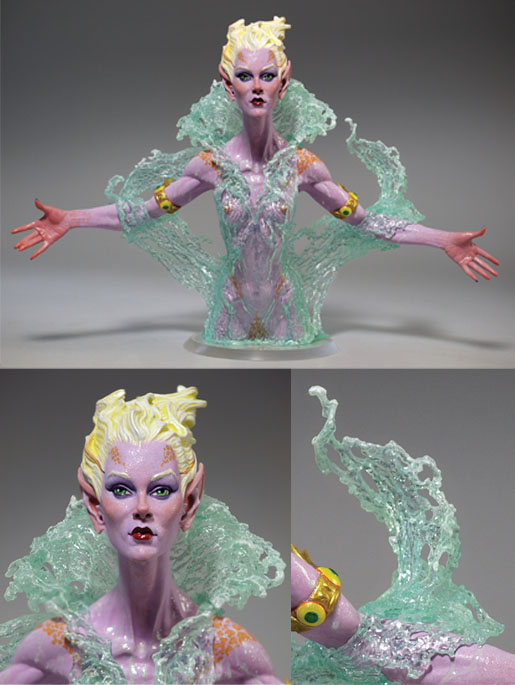
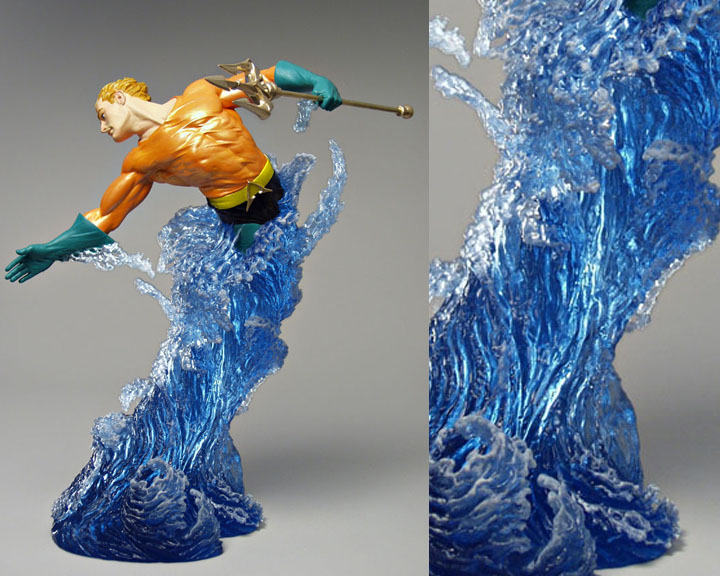
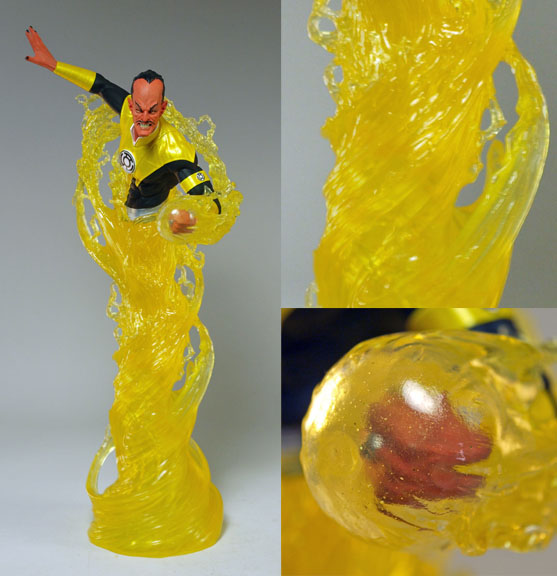
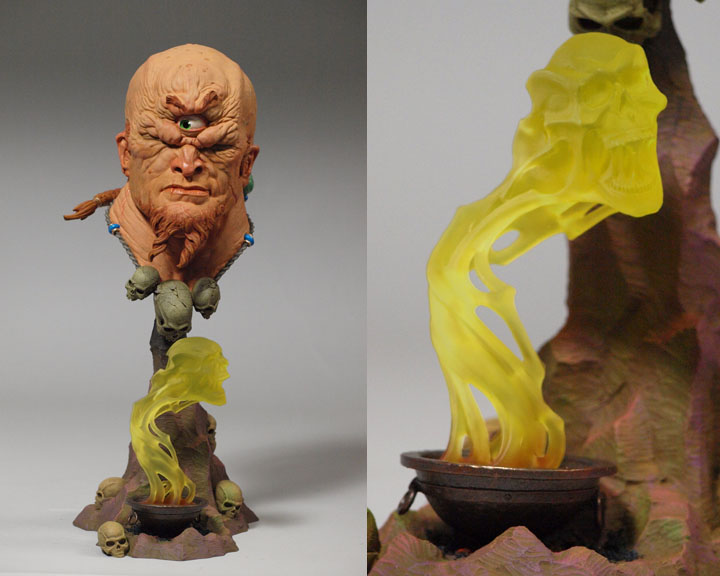

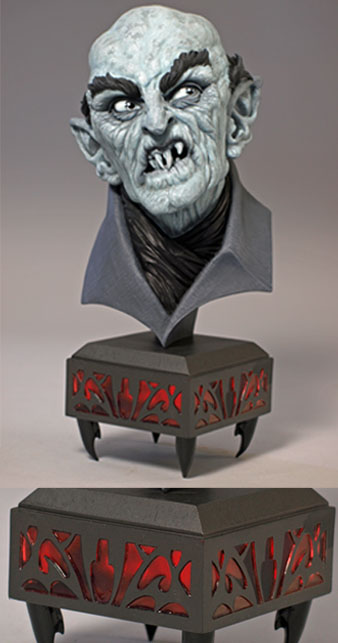
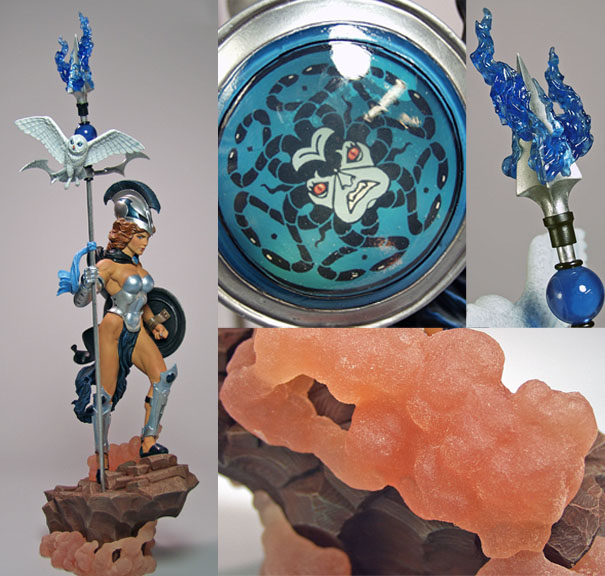
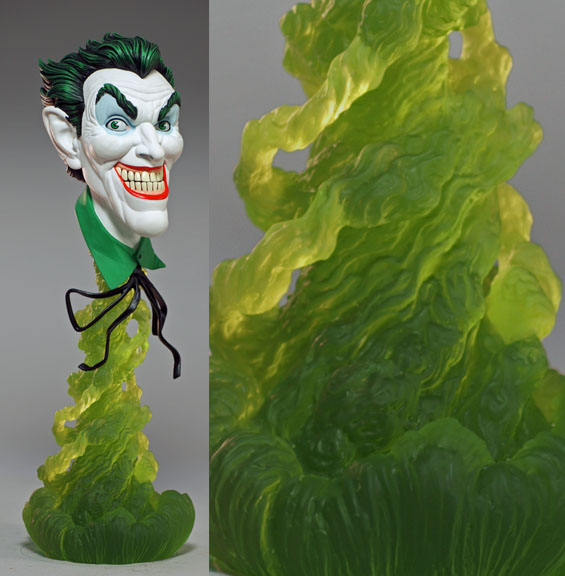
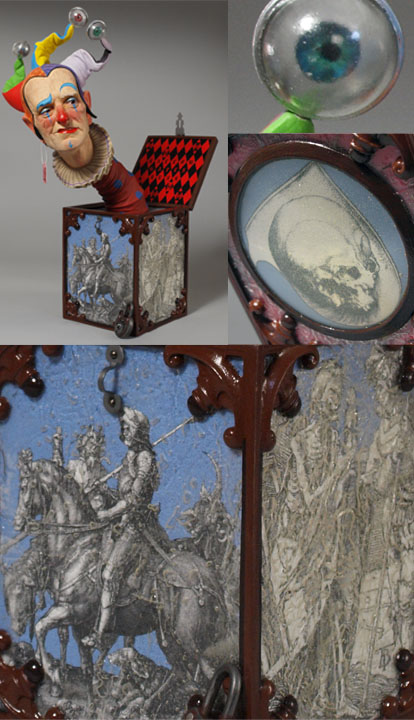
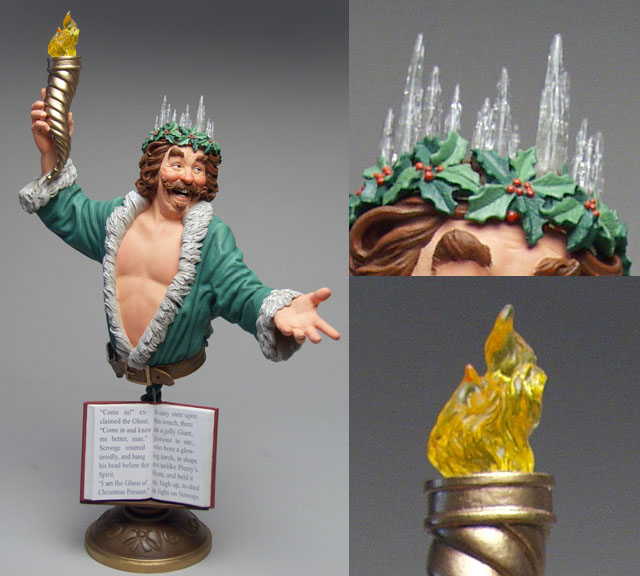


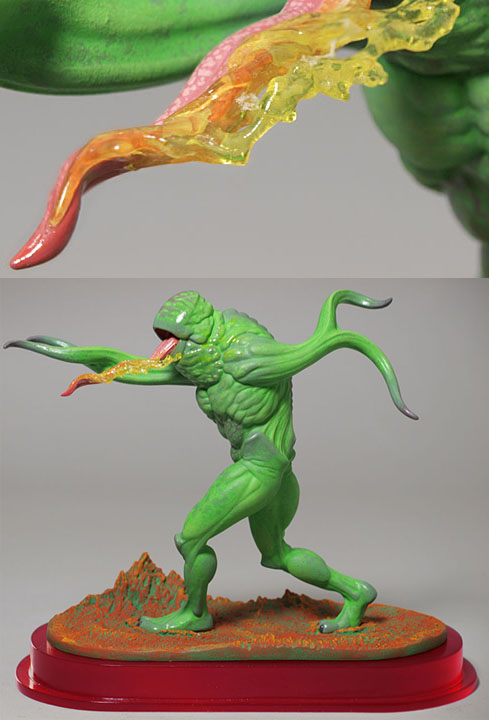

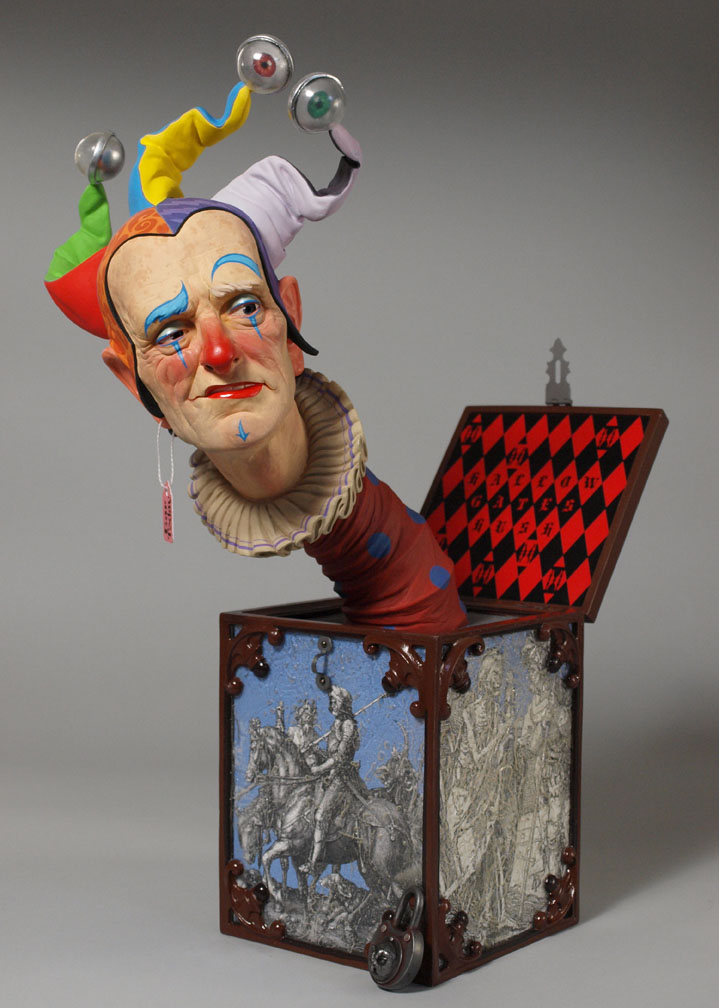
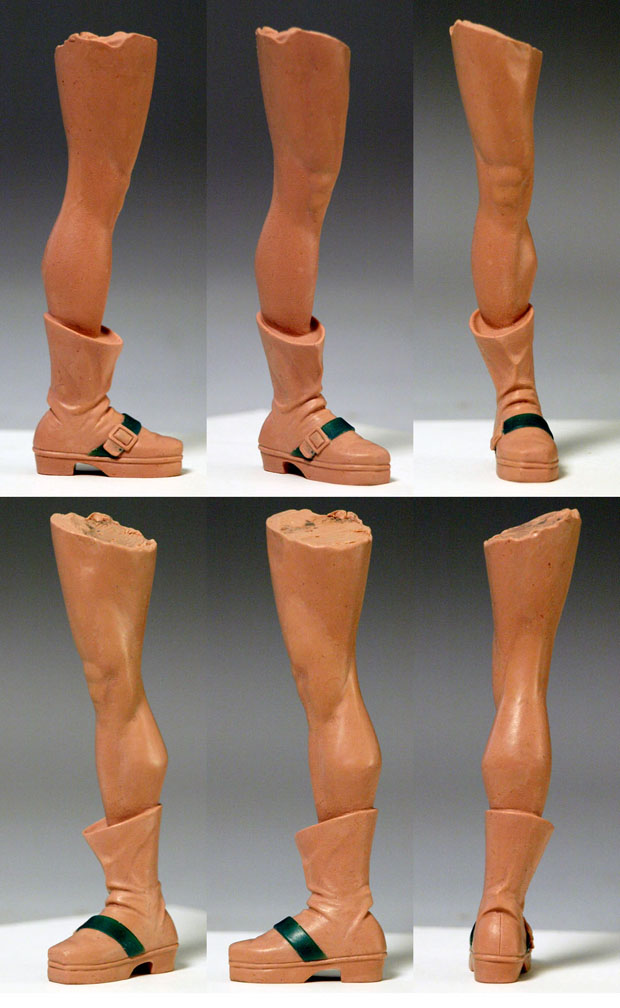
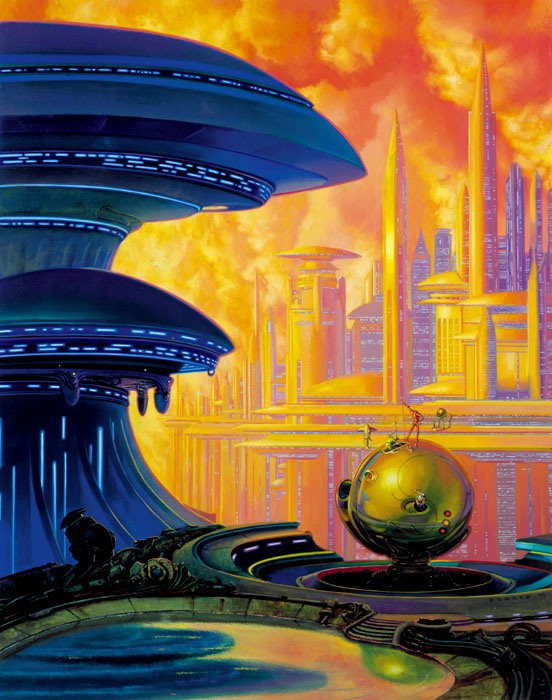

Another trick with clear resin is to actually heat the resin itself. Stand the bottles of resin in a bowl or tub of hot water (not boiling, just hot from the tap) for 10 minutes or so before mixing. This also reduces bubbles because the resin usually isn't as thick when warmed up so it mixes easier.
Great post! Love experimenting with resin, although all we get here is the stuff used in construction. What exactly should one use to tint resin? The only thing I've managed to get semi-OK results with is paint intended to be used on glass. Too much and it never cures completely.
@ Sheryl … that is a very good tip, thanks!
Yes thanks for the great post. Really enjoyed it, I would ask do you know of more resources online that you would'nt mind sharing next time, regarding procedures and materials.. types of moulds you spoke of, I am very keen on this topic, and hope to have a hand at it myself soon! Thanks again